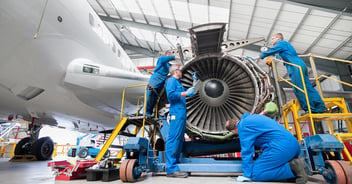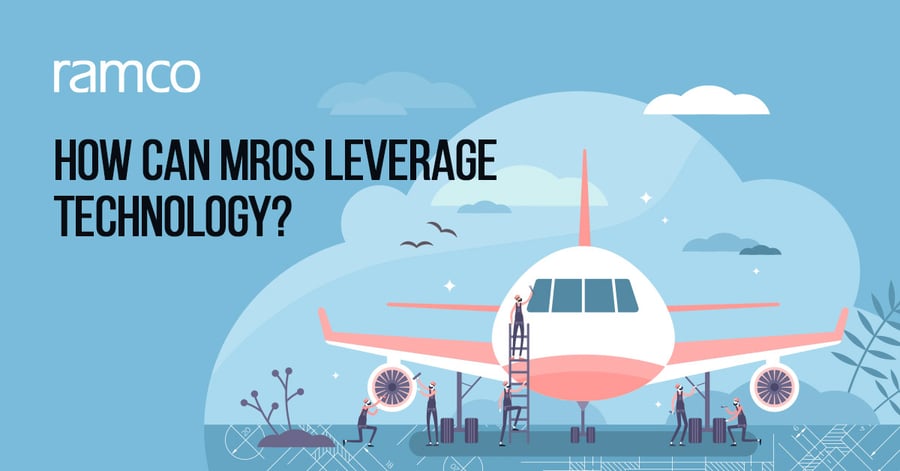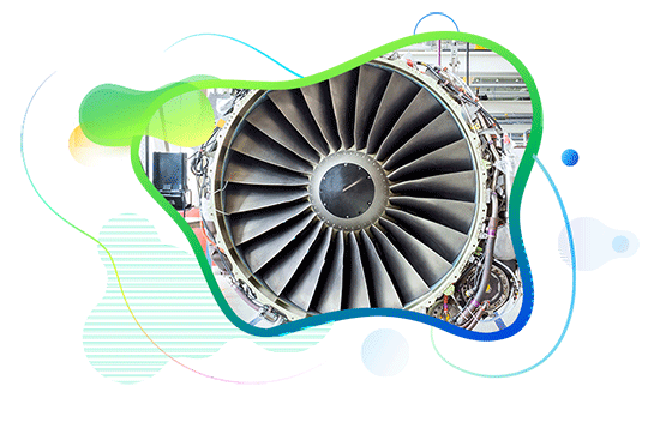
Technology: A differentiator in the engine MRO game
Published :

The aircraft engine market is slowly recuperating from the effects of Covid-19. As per a recent article in Aviation week, Engine MRO market demand will grow at a 4.9% CAGR over the next 10 years, the highest rate of any expense category. It also makes up 46% of total MRO demand over the same period. The demand for heavy airframe maintenance over the next decade is below average at a 1.3% CAGR. Having said that, MROs will be under pressure to cut down costs as operators continue to focus on cutting down maintenance expenses. Under these circumstances, how can Engine MRO companies achieve their 2 important KPIs - cutting down costs and maximizing revenues at the same time? Well, the answer lies in the way Engine MROs leverage technology to improve their processes and eliminate inefficiencies from their operations.
In this blog, we shall discuss the various stages involved in an aircraft engine’s line maintenance, typical challenges they face, and how technology, particularly MRO software and engine MRO software, can be leveraged to address these challenges.
An aircraft engine undergoes routine maintenance and repairs from time to time depending on the engine type. Typically, an engine requires a complete overhaul every 5 years. And this overhaul happens in a set of stages. Let us look at these stages, specific jobs performed, challenges faced by MROs, and the solutions that address these challenges.
Engine MRO software plays a critical role in optimizing this phase by providing a centralized platform for data management and collaboration. By integrating historical data and predictive analytics, MROs can generate precise quotations that reflect the actual scope of work required, thus minimizing discrepancies and enhancing customer trust.
Additionally, utilizing MRO software allows for real-time tracking of engine status and maintenance timelines, facilitating proactive planning and resource allocation. This technology not only streamlines the induction and inspection process but also reduces turnaround times, ultimately contributing to cost savings. As MROs continue to seek ways to cut costs while maximizing revenue, leveraging advanced engine MRO software becomes an essential strategy in transforming operational efficiency and improving service delivery.
An aircraft engine undergoes routine maintenance and repairs from time to time, depending on the engine type. Typically, an engine requires a complete overhaul every 5 years. And this overhaul happens in a set of stages. Let us look at these stages, specific jobs performed, challenges faced by MROs, and the solutions that address these challenges.
The complex engine maintenance process starts even before the engine arrives at a hangar physically. Normally, the customer (usually an operator or a manufacturer) asks for quotation and timelines for doing the maintenance work and the MRO services provide the same with historical experience and data based on the work scope.
| Challenges | Solution |
|
Typically, this stage involves a lot of paperwork and relying on technicians to come up with costs and a schedule of work can be time-consuming and the inputs may have errors. |
A good MRO software helps provide effective estimates based on historical work information. These estimates are provided quickly and are more accurate. |
|
The customer sends the work package in PDF document and MRO’s team reviews it with the help of a 10-15 member team (for large MROs), who manually decode the document and make it processable for the commercial team to validate the scope and provide the details to the maintenance team. This adds to the delay in responding to the customer. |
The ideal solution reads the work package shared by the customer in any format and converts it into a digital template which then automatically notifies the commercial and maintenance team to review the details electronically. So, it effectively cuts down lead time, eliminates paper in the process. |
Also Read: 5 Steps To Unlock Value In Engine Maintenance Process
A commercial aircraft engine typically contains more than 40,000 parts and during a major overhaul, the engine needs to be dismantled and these parts are sent to repair internally and externally.
| Challenges | Solution |
|
Engine MRO acitivities providing services to multiple engine variants struggle to maintain the engine configuration template structure, not only at the main engine level but at a sub-module level as well. |
A sophisticated configuration management system allows MROs to maintain multiple engine templates and variants across OEMs. So, when an engine is received from a customer, the system automatically recognizes the template and helps the commercial/technical team to update the engine serial/lot details. |
|
Having real-time visibility into resources and material availability is still a dream for many MROs. If any additional work crops up, MROs generally struggle to arrive at revised estimates. |
This is where the magic of AI/ML should work where the optimization engine can provide accurate and real-time visibility into inventory and resources required to perform the job that can help the MROs revise timelines and gauge the efforts required. |
As engine sub-modules, parts and components go for repair to different locations. So, all these tasks need to be tracked properly and maintained, and this process is called Kitting and marshaling.
| Challenge | Solution |
|
Engine MRO’s major challenge is to keep track of multiple child work orders (both internal and external), and also keep a tab on the location of each sub-modules under the aircraft. |
It requires a fully integrated system to provide visibility across business functions, complete the maintenance process, getinfo on the location of each sub-module and work order. This helps to know about delays in the downstream process and also feeds this information back to the scheduling module. |
Also Read: Ramco leads the way in Aviation M&E and MRO
This is the phase in which the engine is rebuilt with all parts that are collected and assembled. Then the engine goes into the test cell where it is subjected to thorough testing.
| Challenges | Solution |
|
MROs have to provide detailed reports of incoming & outgoing parts, serial details, etc. to the customer, to ensure that it is compliant with contract terms and also to make sure all the correct parts are delivered to the customer, which typically is done manually. |
An automated configuration control system keeps track of configuration changes at multiple levels - Incoming Parts, Receipt Parts and Outgoing parts. This information is also available electronically to the end customer to view in real-time. |
|
After the work is completed, MROs have to manually review the paper documents and validate them with the contract to ensure the correct rates and applicability are applied. Even after the work is completed, it takes around 10-20% of the overall repair time to produce the final bill to the customer. |
It requires a solution that has automatic billing capability integrated with a contract framework that can validate the contractual commitments, rates, and work scope to generate the bill. This can reduce the overall repair TAT by 10-20% and also ensures there is no revenue leakage. |
This is the final phase where the assembled engine is shipped to the customer. Generally, MROs rely on the shipment carrier portal to track the package status and ensure it is delivered on time. But a sophisticated software integrates the shipping module with freight forwarders, through which the MRO will get real-time visibility into package status and also get alerts in case of delays. It may even provide recommendations on which freight carrier to be selected with faster lead time and low cost.
Overall, MROs must focus now on choosing the right solution to achieve their goals of optimizing costs and improving the revenue in the aviation industry.

All Rights Reserved. © Copyright 2024. Ramco Systems.